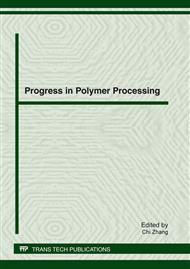p.360
p.366
p.372
p.376
p.382
p.388
p.393
p.398
p.402
Numerical Simulation of Tire Steady-State Temperature Field Based on ANSYS Workbench
Abstract:
The three-dimensional axial symmetry FEA (finite-element analysis) model is established for 165/70R13 type tire based on ANSYS Workbench FEA software, and numerical simulation at temperature field is implemented, which reflects the temperature distribution at each part of tire intuitively, and has a certain guiding significance of improving tire structure and design.
Info:
Periodical:
Pages:
382-387
Citation:
Online since:
January 2012
Authors:
Keywords:
Price:
Сopyright:
© 2012 Trans Tech Publications Ltd. All Rights Reserved
Share:
Citation:


